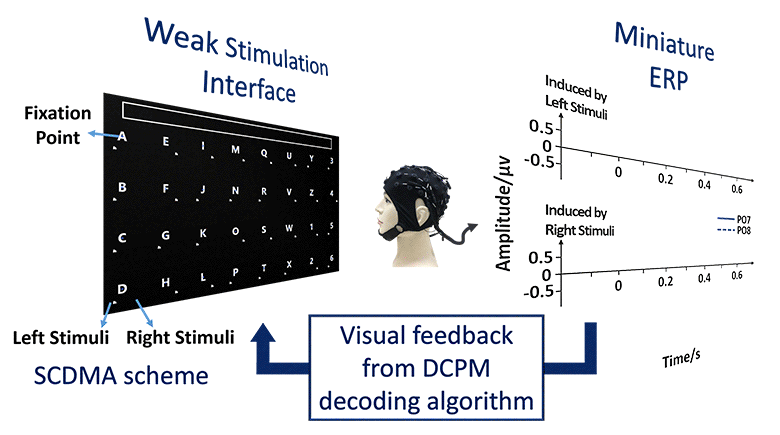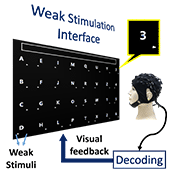
Traditional visual brain-computer interfaces (BCIs) was faced with the dilemma of whether or not to use large-size visual stimuli to code instructions. On the one hand, to overcome the noisy electroencephalography (EEG) environment, scientists preferred to use strong visual stimuli to elicit large-amplitude brain signals to control BCIs; on the other hand, users would easily feel visual fatigue and other adverse symptoms for long-term exposure to the strong or even irritating stimuli. A challenging approach to address this problem is to develop a method to recognize weak BCI signals induced by small visual stimuli. We propose a new BCI instruction encoding method——space-code division multiple access (SCDMA) scheme, and a new EEG decoding method——discriminative canonical pattern matching (DCPM) algorithm to implement a vision friendly and high-efficiency BCI system. Thirty-two characters are encoded by very small visual stimuli, which only subtends 0.5º of visual angle and are placed outside the fovea vision. Such small visual stimulus could only induce a miniature event-related potential (ERP) about 0.5 μV in amplitude. Notably, compared to the traditional P300 and SSVEP features, the miniature ERP has a reduction of about 10~20 dB in signal-to-noise rate, which poses a great challenge for BCI to recognize. Online tests of the new BCI system show a peak information transfer rate of 63.33 bits/min, demonstrating the feasibility of using very small and inconspicuous visual stimuli to implement an efficient BCI system. Therefore, the proposed innovative technique can lead to a considerable extension of applicable brain signals for BCIs, which can broaden the category of BCIs and strengthen the brain-computer communication.

